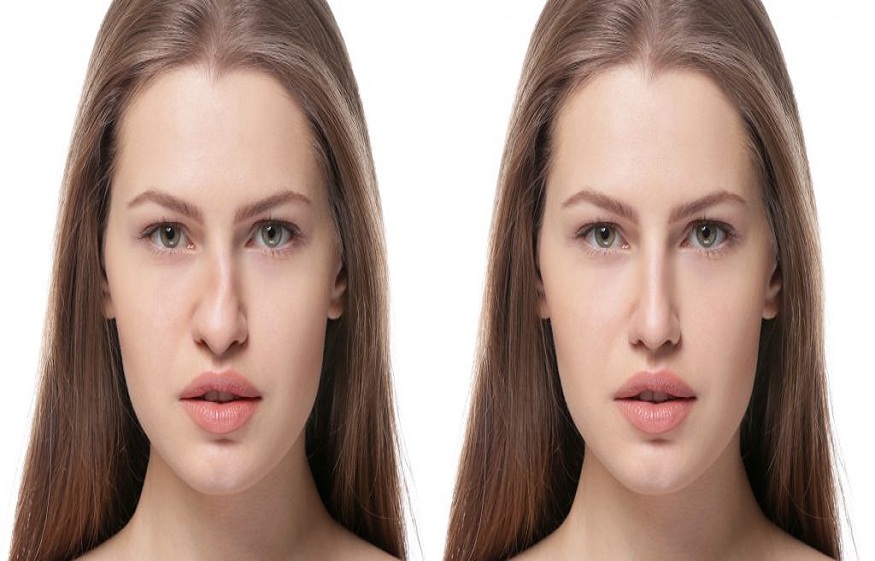Rhinoplasty is a cosmetic or reconstructive surgery procedure that consists of reshaping the nose to change its appearance. This intervention makes it possible to correct disgraces which are most often very badly experienced by the patient: bump, drooping nose, too hollow nose, deviated nose….
They profoundly reduce the quality of life, and are often accompanied by a lack of self-confidence.
The surgical intervention will make it possible to correct these defects, to provide the patient with a significant improvement in his physical and psychological well-being. This is all the more remarkable in the patient wishing to redo his nose, because this organ is in the center of the face, subject to all eyes.
Finally, remember that the intervention must preserve and maintain the respiratory function.
Rhinoplasty must be natural and respect the harmony of the face.
Here are some examples of a natural nose, neither too deep nor too straight. The intervention allowed each time to restore the nose to its correct proportions. The tip, like the back of the nose, is well drawn and corrects the initial defects without creating the “remade nose” appearance.
What are the main objectives of rhinoplasty?
Rhinoplasty pursues different goals depending on the patient’s problem. The main objectives of rhinoplasty are:
Improving the aesthetic appearance of the nose
Improvement of respiratory discomfort
Rejuvenating effect to correct the progressively drooping and skeletonized appearance of the nose with aging
Our concept of successful rhinoplasty
The search for naturalness and harmony are a constant with the surgeon, who relies both on a precise technique and in an artistic sense specific to each one.
Our vision of successful rhinoplasty is based on the search for naturalness and harmony between the different subunits of the nose, but also between the nose and the rest of the face. The search for harmony is not done randomly and is based on several principles:
We respect the lines and angles described by artistic and surgical anatomy, which make rhinoplasty a true science.
We consider rhinoplasty according to the patient’s request. It is a tailor-made surgery that adapts to the patient’s wishes and anatomy. And not a systematic technique that reproduces identical noses.
We bring our advice and our know-how to each patient, taking into account the harmony of the different structures of the nose between them. This led us to develop the concept of “relative rhinoplasty” , which is today the central pivot of our interventions.
We are constantly on the lookout for surgical innovations. Over the past 10 years, innovative techniques have improved the natural look of rhinoplasty . This is particularly the case with spreader grafts, or complex nasal bridge grafts. I compel myself to a permanent update, and only use innovations that have proven themselves.
Reciprocal listening is essential in rhinoplasty
In the 21st century, the involvement of the patient in his treatment has become essential. This is based on a detailed and clear discussion between the surgeon and the patient.
Listening is therefore essential, and it must be reciprocal between the surgeon and his patient:
The surgeon must question his patient at length, and make him express his wishes. A project must be well defined, and the patient must insist until everything is clear to him.
Computer simulations can be useful, but are in no way contractual. They can help the surgeon to better understand his patient’s request.
The patient must also listen to the surgeon. Indeed, the surgeon should not make his patient “dream”, and tell him frankly what is feasible, as well as the possible risks. The patient must pay close attention to all the points developed by the surgeon, and not lie to himself when the surgeon lowers certain expectations.
The choice of a plastic surgeon specialized in rhinoplasty is essential
The specialization in rhinoplasty is based on a specific training, in over-specialization of the classic training in aesthetic plastic reconstructive surgery.
In addition to this training, I regularly update my knowledge in conferences or through involvement in learned societies such as the French Society of Plastic Reconstructive Aesthetic Surgery. I developed this skill in the plastic surgery department of the Saint-Louis Hospital in Paris, where I developed the activity of rhinoplasty and reconstruction of the nose, under the aegis of Pr Servant. Learn more about Dr. Derhy’s rhinoplasty specialization
Candidates for rhinoplasty
Patients who are candidates for rhinoplasty present many aesthetic variants, which can lead to the intervention.
ethnic rhinoplastyNot all rhinoplasties have the same complexity. My experience in rhinoplasty and nasal reconstruction allow me to perform very complex rhinoplasties today. The complexity is linked above all to the technical difficulties that require all these interventions. Complex transplants are almost systematic, and only a common practice can judge the need for such or such treatment.
Technical considerations are essential, but it is also necessary to know and understand patient expectations before performing this type of rhinoplasty. The treatment experience of many patients is an important asset in understanding what each person wants.
We invite you to learn more about specialized rhinoplasties, which are:

